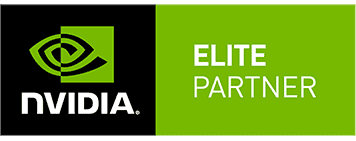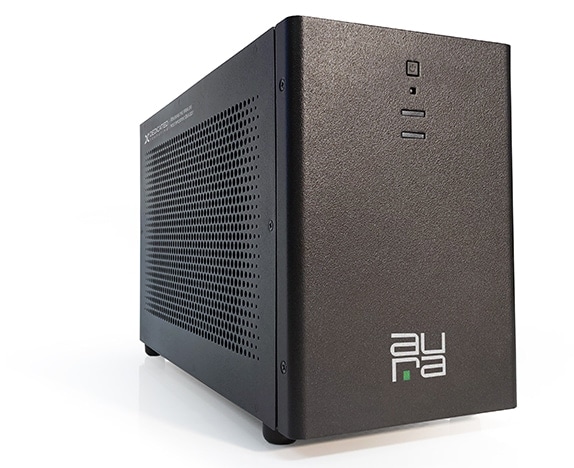6 Questions to Ask Before Choosing Embedded Computing Systems
Smart Hardware Choices Enable a Cascade of Value: Cost, Performance, and Lifecycle Longevity
Determining the right hardware platform for a sophisticated application isn’t always part of the discussion within the product development process. In many cases, a Bill of Materials (BOM) may have been established without insight into application specifics that are crucial to determining smart, cost effective choices. The right methodologies for product consultation can make all the difference. Consultation drives the design process based on real-world goals for performance, system longevity, and Total Cost of Ownership (TCO).
The following six questions can help OEMs and ISVs select the right hardware design to best support their purpose-driven application and product.
1. What does my application actually require?
Custom versus off-the-shelf is typically the first consideration, as OEMs determine if their application requires a standard set of capabilities and compute power, or something beyond an off-the-shelf system. To capture the best of both worlds, Original Design Manufacturers (ODMs), like Dedicated Computing, provide an extensive product catalog, offering a well-defined starting point that can be fine-tuned for both performance and value. These designs tap into the ODM’s expertise, honed from developing specialized systems in highly competitive embedded markets. OEMs can win big by capitalizing on a previously established catalog of systems, proven in the market for performance and longevity. Off-the-shelf is a legitimate option if buyers know the right questions to ask in advance.
2. How do I align the hardware with my application?
Early discussions in the system selection process address key areas of performance, potentially challenging preconceived expectations about specific components such as processors or GPUs. A deeper dive will determine how each component’s individual features and capabilities fit within the larger system. Four essential areas include CPU, memory, storage, and GPU – and should all be addressed for performance needs while considering future scalability of the application.
3. How do I right-size my choice of processors?
Understanding clock speed requirements is a critical consideration in choosing a CPU, along with whether or not the application demands any special type of caching. High-end processors have a variety of built-in caching capabilities, with some offering 8MB and others closer to 20MB. The difference between these two cache points impacts cost, making it worthwhile to determine what the application really requires. Higher cache is ideal for applications that need to process large data sets very quickly. But is that what your application demands? Early discussions within the product development process will help OEMs avoid paying for 20MB of cache if it is not needed.
4. What are my expectations for memory needs as my application evolves over time?
OEMs planning to ship a product for 10 years need a memory strategy that supports application growth over time, planning ahead to avoid unplanned hardware upgrades as a result. Applications may be written to require more memory, merely because of processor limitations at the time of their development. Yet data traffic has changed based on processor advancements, with additional lanes commonly available to access smaller pieces of memory faster. Often times, applications simply require more memory to continue performing as steady improvements are made.
5. What are the pitfalls of defining a storage solution?
Storage requirements should be based on the size of the data, as well as how quickly the application needs to access it. Access falls into two categories – writing and saving data vs reading and retrieving it. For example, within the life sciences industry, modern genomics applications are equally read-write intensive, writing large data sets for immediate reading. In contrast, an image-rendering application witin simulation industry might write just once to its large database, with ongoing reading activity being the heaviest load for the storage solution to manage. These considerations effect decisions about both the amount and type of storage that is optimized for the application. Strategic suppliers can provide valuable help in making this determination, working with information provided by the OEM. Knowing the size of the overall data set as well as its anticipated growth over the lifetime of the application is crucial insight that drives the right choices here. Average file size matters as well – is the application transferring a fewer number of multi-petabyte files or thousands of much smaller files? And if the application writes and rewrites data, does the system account for write limitations common to SSDs? Many are designed with a read-only focus, with write capabilities defined by a limited lifetime that may impact system lifecycle.
6. Do my support plans need to include frequent GPU upgrades?
As it relates to graphic-intense applications, choosing a GPU is largely influenced by how an OEM wants to manage its product. Cards that fall within the consumer or gamer category, for example the NVIDIA GeForce®, change every 12 months or less. End-of-life (EOL) notices are not standard in this type of product environment, so OEMs must remain reactive to frequent change. If this is suited to the OEM’s operations and product lifecycle, they can win with some of the highest GPU performance at the lowest cost. However, if longevity and greater stability are required – often a factor in longer deployments of performance critical systems – the OEM may be wiser to invest in a more costly three to five-year GPU product. Costs per GPU are greater in this scenario, but actually may be more cost effective once the GPU decision incorporates support and ongoing change needs as part of product development costs.
Strategy Must Play a Bigger Role in Design
Smarter hardware choices enable a cascade of value. With collaboration built into the design process, OEMs create a significant opportunity to improve total cost of ownership (TCO). Performance is right-sized, and longevity is considered – for example the OEM may have an opportunity to embrace something significantly less costly, even while protecting a long-term product roadmap. Support needs and ongoing changes are anticipated and planned, eliminating costly surprises and creating a clear understanding of price vs performance. By seeking only a system on which to deliver their application, ISVs and software-focused OEMs may discount the competitive value of right-sizing a system for specific performance. Yet the first communication between and OEM and their contract manufacturer is often a high-level look at an existing BOM. These preconceived notions about hardware can lead to potential issues, above and beyond cost and performance, creating havoc in terms of longevity, parts availability, and ongoing maintenance. In reality, a strategic supplier can help combat these issues early in the selection process – recommending new products ready for smarter customization, or new technologies to consider based on a deeper knowledge of sub-technologies and their progress in the market. Ultimately, with more collaborative practices and a broader view of their hardware requirements, hardware teams within the OEMs can bring to the table just the right amount of technology to meet application needs for the long term.
Global OEMs Choose Dedicated Computing
At Dedicated Computing, we are an original design manufacturer (ODM) of advanced computing solutions for global original equipment manufacturers (OEMs) in healthcare, life sciences, military/government, and industrial automation markets. We work closely with our OEM customers to develop high-performance embedded systems optimized for their computational and lifecycle requirements. Global OEMs choose and trust Dedicated to deliver products with reliable and long-lasting performance.
Given the critical role they play in many electronic devices and systems, it is essential to ensure embedded systems are designed and built correctly for the given tasks. That’s why OEMs should partner with an experienced embedded systems provider. They have the knowledge and skills to design and build embedded systems that fully meets the OEM’s specifications and standards.

Dedicated Computing is an NVIDIA Elite Partner specializing in Professional Visualization and System Integration of GPU Technologies



